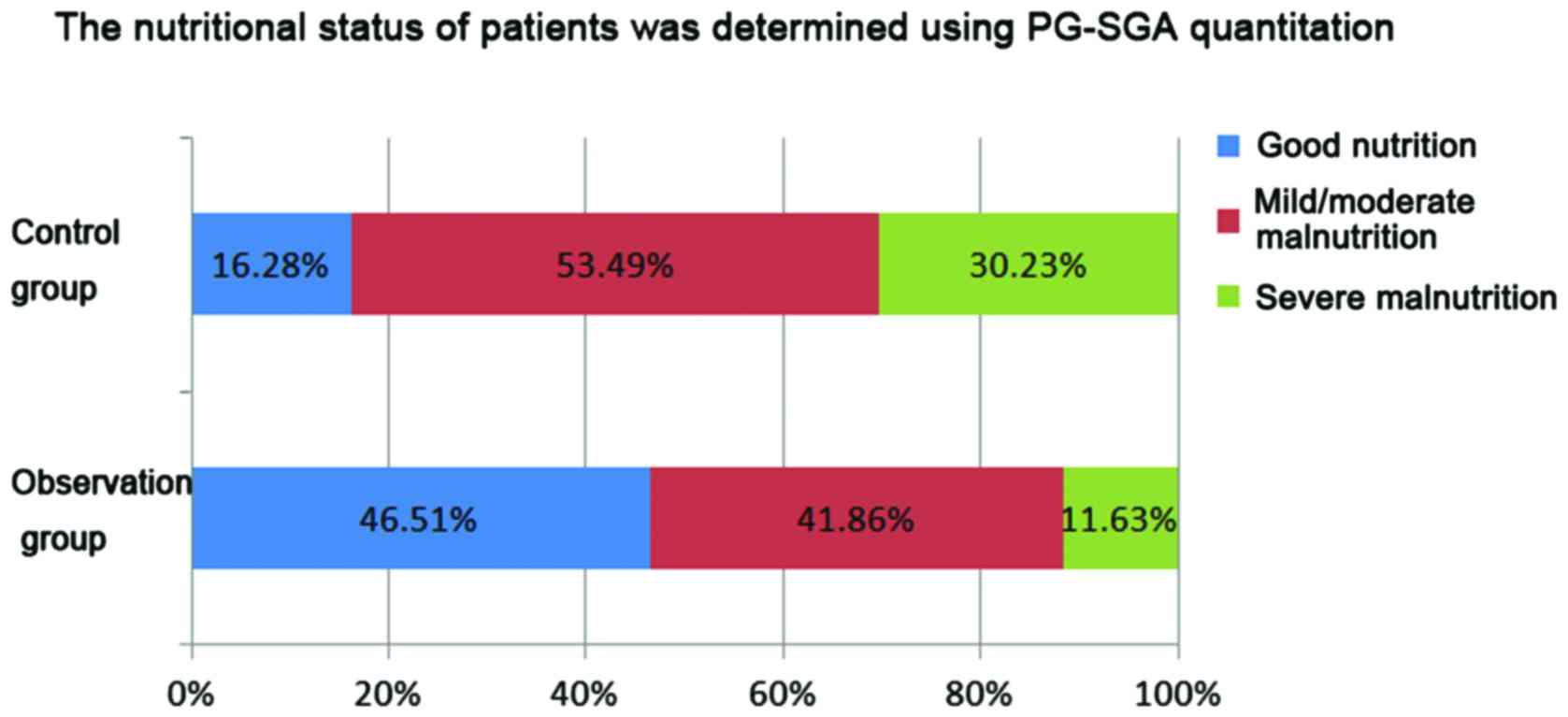|
1
|
Li L, Xu Y and Wang B: Liriodenine induces
the apoptosis of human laryngocarcinoma cells via the upregulation
of p53 expression. Oncol Lett. 9:1121–1127. 2015.PubMed/NCBI
|
|
2
|
Li P, Zhang J, Sun G and Li H: Assessment
of quality of life for laryngeal cancer patients after
laryngectomy. Lin Chung Er Bi Yan Hou Tou Jing Wai Ke Za Zhi.
28:1648–1651. 2014.(In Chinese). PubMed/NCBI
|
|
3
|
Kaya E, Cingi C, Pınarbaşlı Ö, Gürbüz MK,
Çaklı H, İncesulu A, Özüdoğru E and Keçik C: Health-related quality
of life in laryngeal cancer patients. J Med Updates. 4:29–36. 2014.
View Article : Google Scholar
|
|
4
|
Shivappa N, Hébert JR, Polesel J,
Zucchetto A, Crispo A, Montella M, Franceschi S, Rossi M, La
Vecchia C and Serraino D: Inflammatory potential of diet and risk
for hepatocellular cancer in a case-control study from Italy. Br J
Nutr. 115:324–331. 2016. View Article : Google Scholar : PubMed/NCBI
|
|
5
|
Bedard G, Zeng L, Zhang L, Lauzon N,
Holden L, Tsao M, Danjoux C, Barnes E, Sahgal A, Poon M, et al:
Minimal important differences in the EORTC QLQ-C30 in patients with
advanced cancer. Asia Pac J Clin Oncol. 10:109–117. 2014.
View Article : Google Scholar : PubMed/NCBI
|
|
6
|
Agra IM, Ferlito A, Takes RP, Silver CE,
Olsen KD, Stoeckli SJ, Strojan P, Rodrigo JP, Filho Gonçalves J,
Genden EM, et al: Diagnosis and treatment of recurrent laryngeal
cancer following initial nonsurgical therapy. Head Neck.
34:727–735. 2012. View Article : Google Scholar : PubMed/NCBI
|
|
7
|
Chen Y, Liu BL, Shang B, Chen AS, Liu SQ,
Sun W, Yin HZ, Yin JQ and Su Q: Nutrition support in surgical
patients with colorectal cancer. World J Gastroenterol.
17:1779–1786. 2011. View Article : Google Scholar : PubMed/NCBI
|
|
8
|
Shpata V, Prendushi X, Kreka M, Kola I,
Kurti F and Ohri I: Malnutrition at the time of surgery affects
negatively the clinical outcome of critically ill patients with
gastrointestinal cancer. Med Arch. 68:263–267. 2014. View Article : Google Scholar : PubMed/NCBI
|
|
9
|
Lu W, Xiong N, Lyu Z and Xu W: Effect of
peer education on postoperative rehabilitation of patients with
laryngeal cancer. Zhonghua Er Bi Yan Hou Tou Jing Wai Ke Za Zhi.
49:632–636. 2014.(In Chinese). PubMed/NCBI
|
|
10
|
Langius JAE, Twisk J, Kampman M, Doornaert
P, Kramer MH, Weijs PJ and Leemans CR: Prediction model to predict
critical weight loss in patients with head and neck cancer during
(chemo)radiotherapy. Oral Oncol. 52:91–96. 2016. View Article : Google Scholar : PubMed/NCBI
|
|
11
|
Omlin A, Blum D, Wierecky J, Haile SR,
Ottery FD and Strasser F: Nutrition impact symptoms in advanced
cancer patients: Frequency and specific interventions, a
case-control study. J Cachexia Sarcopenia Muscle. 4:55–61. 2013.
View Article : Google Scholar : PubMed/NCBI
|
|
12
|
Skóra T, Nowak-Sadzikowska J,
Mucha-Małecka A, Szyszka-Charewicz B, Jakubowicz J and Gliński B:
Postoperative irradiation in patients with pT3-4N0 laryngeal
cancer: Results and prognostic factors. Eur Arch Otorhinolaryngol.
272:673–679. 2015. View Article : Google Scholar : PubMed/NCBI
|
|
13
|
Cotogni P: Enteral versus parenteral
nutrition in cancer patients: Evidences and controversies. Ann
Palliat Med. 5:42–49. 2016.PubMed/NCBI
|
|
14
|
Leonard CS and Kukkonen JP:
Orexin/hypocretin receptor signalling: A functional perspective. Br
J Pharmacol. 171:294–313. 2014. View Article : Google Scholar : PubMed/NCBI
|
|
15
|
Messina G, Dalia C, Tafuri D, Monda V,
Palmieri F, Dato A, Russo A, De Blasio S, Messina A, De Luca V, et
al: Orexin-A controls sympathetic activity and eating behavior.
Front Psychol. 5:9972014. View Article : Google Scholar : PubMed/NCBI
|
|
16
|
Earley ZM, Akhtar S, Green SJ, Naqib A,
Khan O, Cannon AR, Hammer AM, Morris NL, Li X, Eberhardt JM, et al:
Burn injury alters the intestinal microbiome and increases gut
permeability and bacterial translocation. PLoS One.
10:e01299962015. View Article : Google Scholar : PubMed/NCBI
|
|
17
|
Siplivyĭ VA, Grinchenko SV, Gorgol' NI,
Dotsenko VV and Evtushenko AV: Pathomorphological peculiarities of
hemomicrocirculatory bed of the small and large intestine in acute
peritoniti. Klin Khirurgiia. 29:61–63. 2014.
|
|
18
|
Xu XD, Sun YS, Shao QS, Hu JF, Qian ZY,
Zhou YL and Ye ZY: Effect of early enteral nutrition supplemented
with glutamine on postoperative intestinal mucosal barrier function
in patients with gastric carcinoma. Zhonghua Wei Chang Wai Ke Za
Zhi. 14:436–439. 2011.(In Chinese). PubMed/NCBI
|
|
19
|
Li NM, Liu F, Lv FY and Zhang QW:
Influencing factors and interventional strategies for early enteral
nutrition after gastric carcinoma surgery. J Cancer Res Ther.
12:689–692. 2016. View Article : Google Scholar : PubMed/NCBI
|
|
20
|
Um MH, Choi MY, Lee SM, Lee IJ, Lee CG and
Park YK: Intensive nutritional counseling improves PG-SGA scores
and nutritional symptoms during and after radiotherapy in Korean
cancer patients. Support Care Cancer. 22:2997–3005. 2014.
View Article : Google Scholar : PubMed/NCBI
|

















